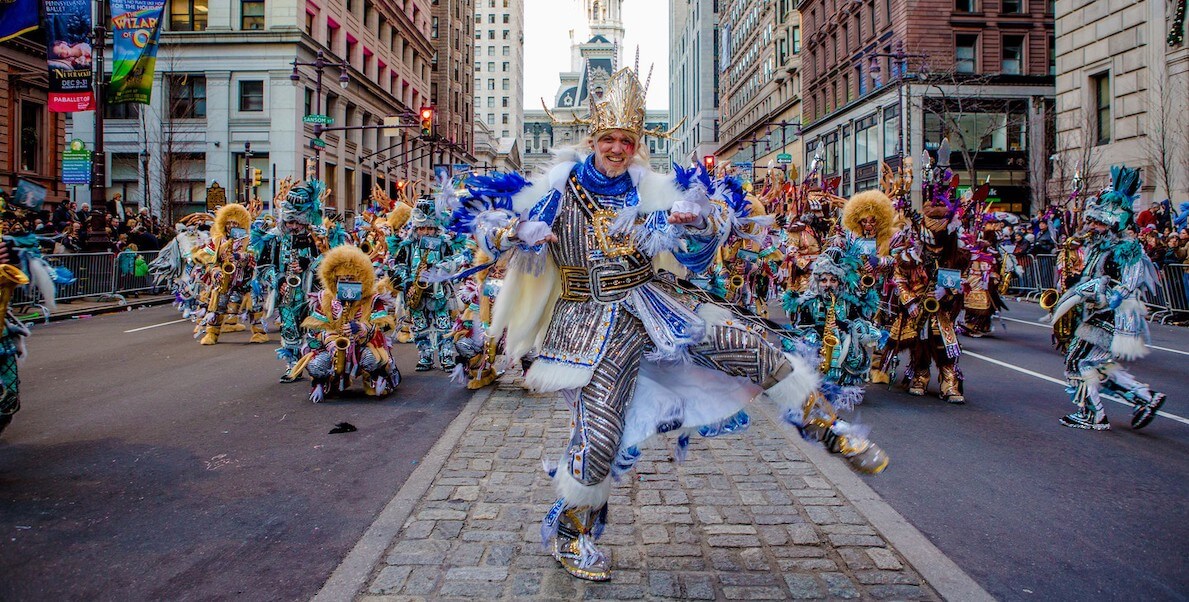Give us whiskey; give us gin,
Open the door and let us in!
– Traditional Mummers rhyme
It’s that time of year again. Ranked in no particular order of importance, we have Christmas, “Second Day Christmas,” New Year’s Eve and of course, the palette-busting pageantry of the Mummers Parade — or, as some Philadelphians say, “Mummers Day,” which is obviously way more important than New Year’s Day, a throwaway holiday if there ever were one.
As a Philadelphian, you probably have fond memories of this January 1 sea of feathered, sequined (rarely but notably politically incorrect) costumes and props marching its way up Broad Street.
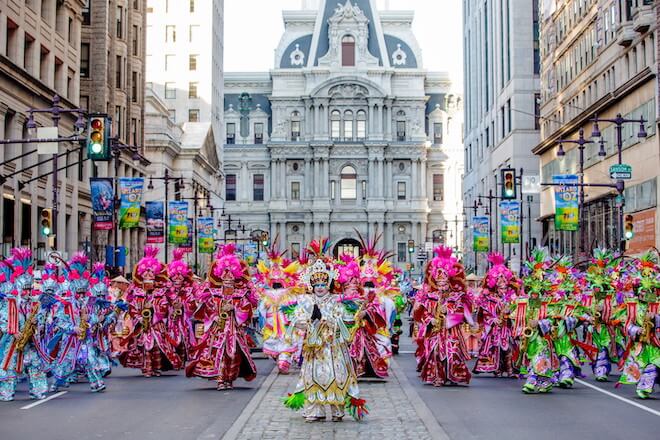
Let’s imagine that one observer of the festivities is named … Olivia. Olivia has attended the parade in gold-painted sneakers since she was a young girl.
Olivia can’t get enough of the polychromatic spectacle before her. She soaks in the notes of banjo, accordion, sax and glockenspiel drifting on the wintery air. She cheers on the iconic Divisions and no longer even questions the names of their respective clubs. Mollywoppers? Saturnalian? Purple Magic? Duffy? Golden Sunrise? Were these names born of Mr. Wonka’s factory or a weed dispensary in Vegas?
Who knows? Who cares? Who dat Froggy Carr?
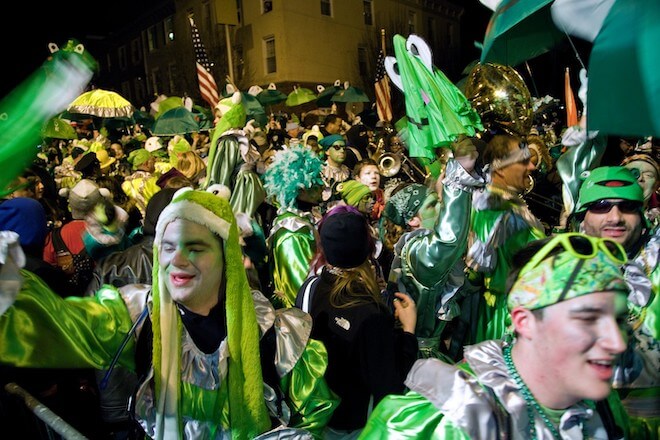
In other cities Halloween is the time for dress-up. The Macy’s Thanksgiving Day Parade? Fine, you have costumes, but Mummers’ entry-level regalia runs a thousand bucks. And Olivia knows that when the fever dream on Broad Street finally ebbs, revelers shift to Two Street.
On the party marches, metaphorically now, into the night. Olivia, unfazed by how grotesque Two Street progressively becomes, dodges frozen urine pools with optimism and groping hands with grace. She ignores the runny makeup and shedding costumes and real-life drunken struts, focusing instead on the original spirit of Mummer celebrations.
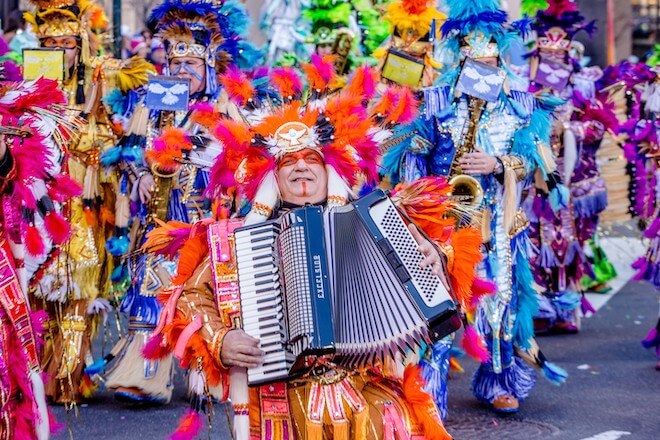
Mummers? Howsers?
Olivia has heard that immigrants from Scandinavia are the ones to thank for our modern mummery. It was they in the 17th century who extended Christmas celebrations from the 25 to the 26 (Second Day Christmas), then all the way to New Year’s Day. Philadelphians, many of whom at the time were proudly British, contributed to the Swedish festivities by adding their own traditional costumes, props and street performances of the well-known play St. George And The Dragon.
Olivia is not so well-versed in 18th century stageplays, but St. George was the physical and spiritual defender of England:
In come I, the Slasher. I am a giant Knight. I come to challenge bold St. George if only he will fight. He fights for Old England, I’ll soon knock him down! I’ll break his head and tear his limbs and carry off his crown!
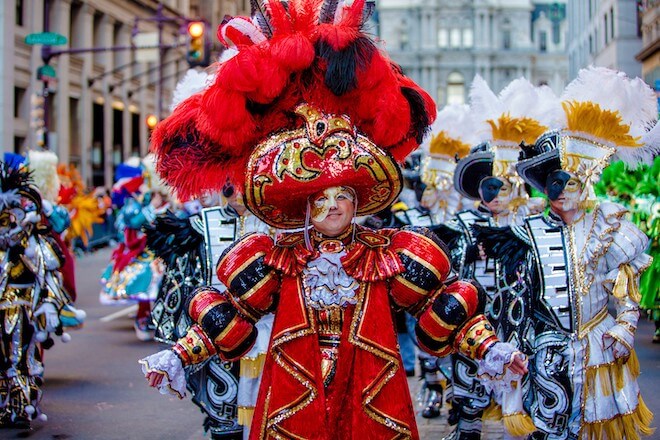
Happy Holidays, everybody!
St. George replies: Here come I, a valiant Knight. I’ll spend my blood for England’s Right! Show me the man that bids me stand. I’ll cut him down with my courageous hand!
I’m guessing right around 17 … 76 Philadelphians stopped lionizing English St. George. Actually they just shifted the setting of the play and cheered on a different, more American, General George.
Take those stage costumes and add 400 years (as well as a small mountain of citywide specials) and you have the peacockery of modern Mummers. Why do we use the word “Mummer?” Best guess: it’s a derivation of Old French momeur, which meant, to mask oneself.
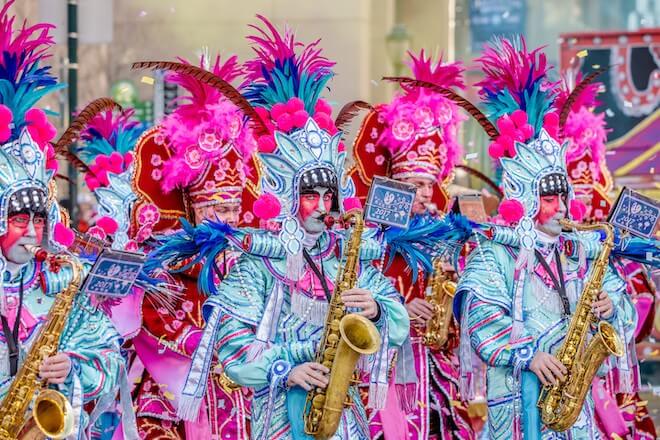
See, says Olivia, this is awesome! Masks, performances, Second Day Christmas? Folks even used to go door-to-door, chatting with neighbors, asking for food and alcohol, having a grand time. It was basically adult trick-or-treating.
The downside of Mummery
Yeah, but intoxicated Philadelphians amassing in large numbers doesn’t usually end in the most civil of ways, no matter the historical era. Mummer revelries got so out of hand, in fact, that the city banned them outright in 1808.
That sounds harsh, Olivia says.
It was the firearms.
The firearms … ?
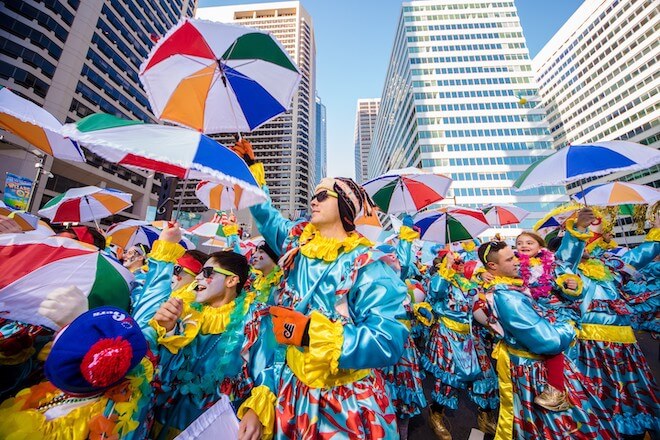
In the 18th century, it was common to “shoot in the New Year” by discharging firearms into the air. Frequently. So take a critical mass of Philadelphians over the moon on gin, and add guns.
Oh god, no.
It was a citywide flash mob. And not the dancing flash mobs of 2009 — more like the theft and vandal flash mobs of 2015. Taverns were invaded, goods were demanded, drunkenness was public, and don’t forget the guns standing in for fireworks (a tradition that continued into the 21st century, although not by Mummers specifically).
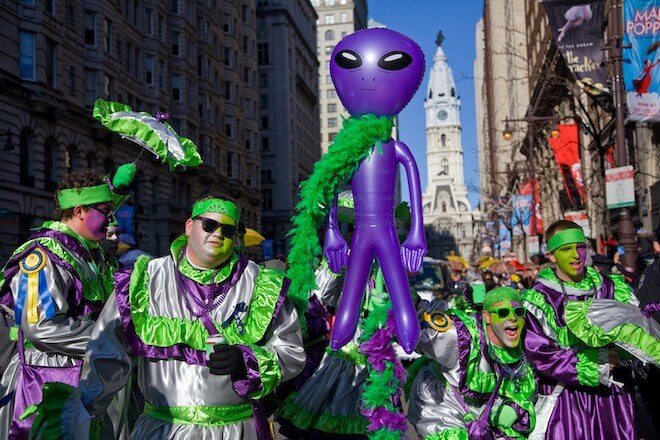
So, the City of Philadelphia banned the Mummer celebrations. And we citizens did not care. We Mummed anyway. For 50 years, City officials looked on in disapproval, but issued no fines, made no arrests, just folded their arms and clucked their tongues. Finally realizing the futility of it all, the “anti-masquerading laws” were repealed in 1859.
As the old saying goes: If you can’t beat them, give them a parade to channel their energies. In the 1880s the City required festival participants to be newly organized into clubs with clear lines of responsibility. And so, it was that in 1901 the first official Mummers Parade (along with its accompanying cash prizes) was born.
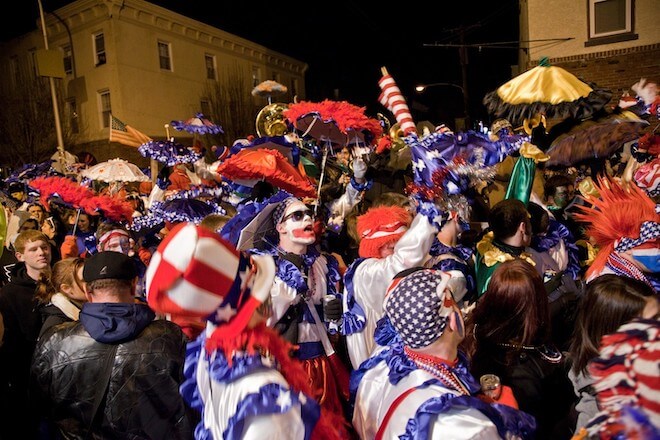
I mean, says Olivia, the City got things under control, so …
Did I mention the blackface?
You did not.
Blackface was a big part of this. Like, even when it really should not have been. During the Civil Rights era, City leaders had to write a policy officially banning Mummer blackface. In 1985, one string band actually petitioned City Hall to let them march in blackface — in 1985. In 2003, a comic brigade did full-on minstrel-face, but with blue makeup. By 2020, Mayor Kenney threatened to end Mummers Parades altogether if clubs couldn’t stop their members from showing up in blackface.
Why is blackface the hill White folks want to die on?
You got me, dude.
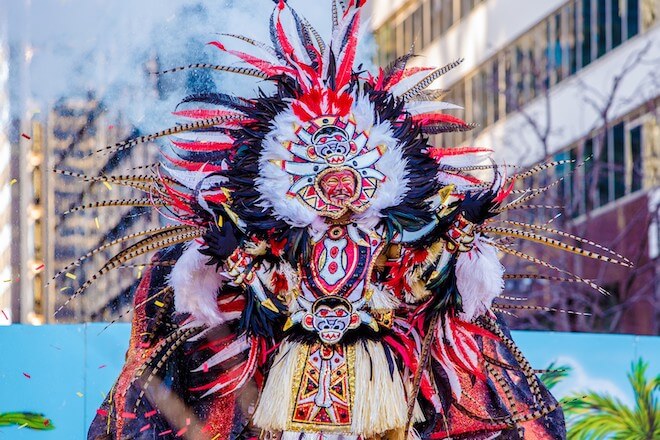
And then there was the early 19th century German tradition of belsnickling children.
Oh for fu–
I’ll stop you right there. Belsnickling is dressing up like Krampus and interrogating children about the morality of their actions over the past year.
A terrifying who’s naughty / who’s nice.
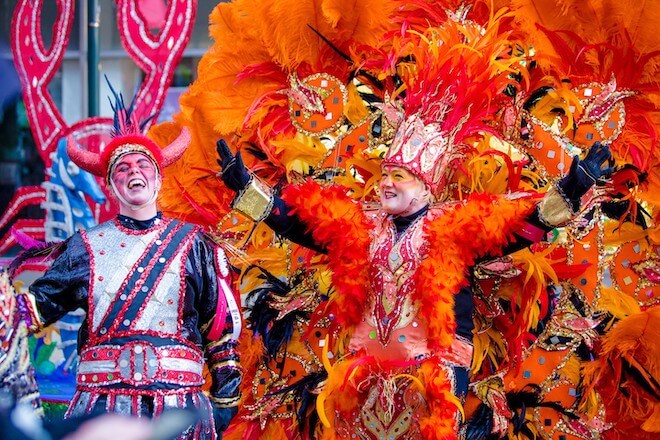
The upside of Philadelphia
But Olivia, don’t despair. Like America herself, the Mummers Parade can rise above its past. Our celebrations have certainly not been untouched by racism, discrimination against queer folk and women (looking your way, wench brigades) and out-of-control crowds of intoxicated party-goers. But the arrow of progress pushes us (and our parades) forward, if not in stops and starts.
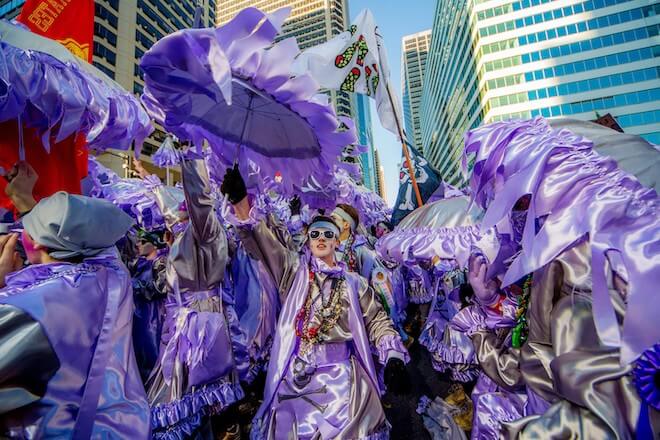
The Mummers Parade is likely the oldest (European) folk festival in the country. It’s a near-psychedelic manifestation of the holiday spirit. Well…a holiday spirit. It may be less “peace on Earth, goodwill toward men,” and more “buffoonery on Earth, good humor toward some,” but it’s all been meticulously crafted and sewn and presented to Philadelphians by Philadelphians. So this holiday season, raise your citywide and toast St. George Washington, Defender of America, as well as our ability to embrace the best things of our past, while attempting to grow beyond the worst.
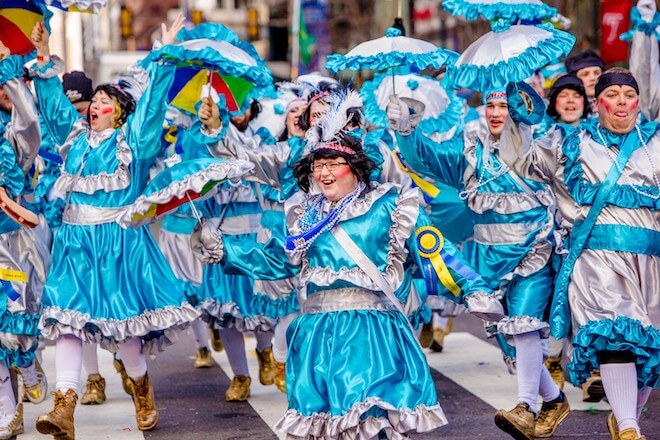
![]()
MORE UNIQUELY PHILADELPHIA PHENOMENA



